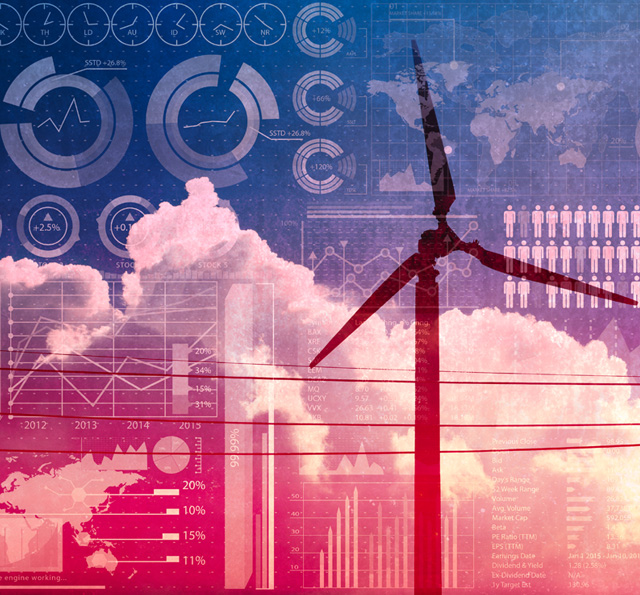
Understand
the challenges
facing our
energy system.
Dedicated to helping clients since 1984.
At OnLocation, we develop, enhance, and apply energy modeling to help our clients understand and respond to the challenges facing our energy system. Our work examines and projects potential trends, policies, technologies, and the associated financial and economic impacts of energy-related decisions.
We’re proud of the work we do on behalf of our clients because we know it can be game-changing for their company or organization, as well as the future of energy. Learn more about our industry-leading energy, environmental, and climate solutions below to see how we can help you next.

Inform Energy and Environmental Policy
With over 40 years of experience performing impact assessments of proposed energy and environmental policies, OnLocation is here to assess everything from climate change policies and CAFE standards to energy efficiency and renewables tax credits.
These policies can significantly impact the mix of energy supply and demand, energy prices, and environmental emissions. To effectively design or measure the impact of a policy on the energy market and system, it’s important to team up with industry experts who utilize integrated modeling. That’s OnLocation.

Evaluate the Role of New Energy Technologies
In our industry, achieving certain goals involves assessing the role of new energy technologies. Keeping a pulse on key factors today—such as the impact of surging supplies of natural gas or the potential role for small modular reactors (SMRs) in power production—can be critical in tomorrow’s success.
OnLocation’s modeling and analysis helps our clients assess the market size for a new energy technology, determine potential market impediments (including competing technologies), and evaluate the ability of the technology to achieve its goals (reduced emissions, energy security, etc.). If you need an expert in integrated energy models to answer your technology questions, we’re here to help.

Explore Alternative
Energy Futures
By designing informative “what-if” scenarios and alternative energy futures, OnLocation helps clients better understand and prepare for potential changes or challenges in the energy market and the economy at large.
With decades of experience using uncertainty analyses to explore a range of alternative energy futures, our team of seasoned field experts have the knowledge, resources, and tools you need to assess potential impacts on tomorrow’s energy system.

Innovate Integrated
Energy Models
The energy system is highly interconnected, meaning changes to one market or fuel can affect other markets and fuel types. An integrated model is essential in analyzing and understanding the impact of trends, policies, and technologies as it takes the entire energy system into consideration.
Using leading programming languages like AIMMS, GAMS, and PYTHON, OnLocation has a long history of performing energy assessments and providing businesses and stakeholders with valuable implementation insights using integrated energy modeling. Our team is also able to innovate custom energy models and data tools to address new or potential challenges in the energy market.
Example Models
NEMS. The National Energy Modeling System is OnLocation’s primary integrated modeling tool; we are uniquely-qualified to create customized applications of NEMS to explore energy and environmental issues.Electricity Market Module (EMM). OnLocation has provided EIA support for the EMM for more than 20 years. Examples of significant contributions include representation of operating reserve requirements, treatment of variable renewable generation and storage (see REStore submodule), development of a regional inputs database, addition of offshore wind, and addition of coal to gas conversion option.
REStore Submodule. OnLocation built the REStore Submodule of NEMS, which provides temporal operations of variable renewable generation and potential curtailments, electricity storage arbitrage value for investment decisions, loading and discharge schedule for diurnal storage, and hydroelectric generation.
CO2 Transport, Utilization, and Storage (CTUS). The CTUS infrastructure model determines the cost of delivering captured CO2 from power plants and industrial sources to enhanced oil recovery (EOR) and saline storage sites, as well as the cost of geologic storage.
Liquid Fuels Market Model (LFMM). OnLocation built the LFMM Submodule of NEMS, a multi-period regional linear programming model which incorporates technologies and economics associated with the transformation of available crude oil and bioenergy into petroleum products and biofuels.
Direct Air Capture (DAC) Module. OnLocation built the DAC Module which optimizes the location and capacity for Direct Air Capture systems to meet carbon emissions targets. DAC represents the recently commercialized liquid solvent technology and allows for multiple energy sources (e.g., natural gas, electricity, and combinations of the two) to be used.
Hydrogen Market Module (HMM). OnLocation built the HMM, a module which models various conversion processes, taking fuels from the coal, natural gas, electricity, and renewables NEMS modules and producing, storing, and transporting hydrogen to supply the Industrial, Commercial, and Transportation modules.
Optimization Model for reducing Emissions of Greenhouse Gases from Automobiles (OMEGA). EPA’s OMEGA model is used to evaluate policies for reducing greenhouse gas (GHG) emissions from light- and medium-duty vehicles.

Value Critical Materials
Critical materials such as lithium, cobalt, nickel, and rare earth elements are essential to producing electric vehicles (EVs), utility storage systems, and renewable power technologies (solar, wind, and hydrogen production) for the U.S. energy transition. Uncertainties surrounding demand, price volatility, materials substitution, and quality—combined with an increasing global need for critical materials—further expose complex supply chains to market, social, and environmental risks.
OnLocation’s comprehensive analysis of the critical materials supply chain includes an integrated energy model that:
- Addresses the global energy economy and its impact on the U.S. economy;
- Accounts for all forms of energy supply and demand;
- Assesses potential risk; and
- Assesses strategies to help reduce supply chain impacts.

Assess Climate Impacts on Energy
As recent events have demonstrated (e.g. Texas Polar Vortex, Western droughts, Eastern flooding), climate change will continue to impact the U.S. energy system. These impacts can be direct, due to increasing magnitude and frequency of extreme events on the energy infrastructure; but also indirect via greater cooling loads on a stressed electrical system, due to increased temperature and strains on water and other resources.
Most energy system models do not internalize potential climate impacts, which can lead to misleading energy system projections and deficient policy analyses. OnLocation is working to incorporate the latest climate change projections for the U.S. into its integrated energy system model to better endogenize future impacts for improved technology and policy analyses.

